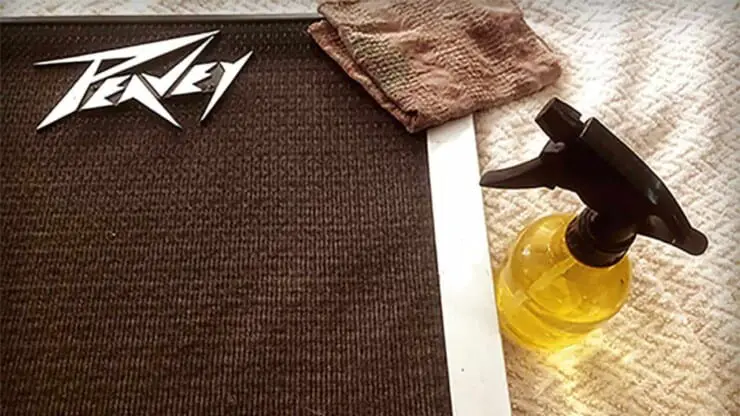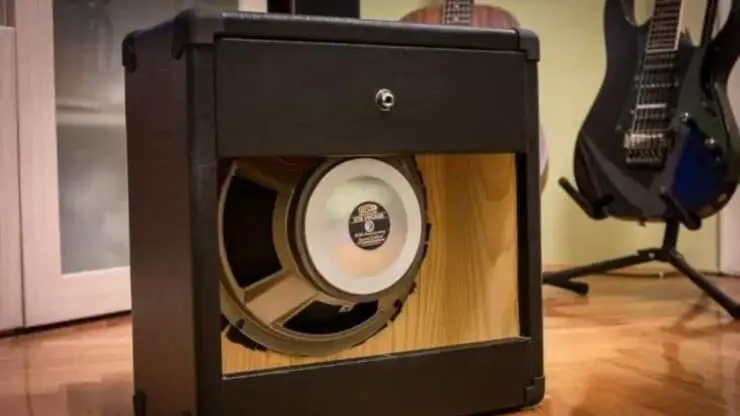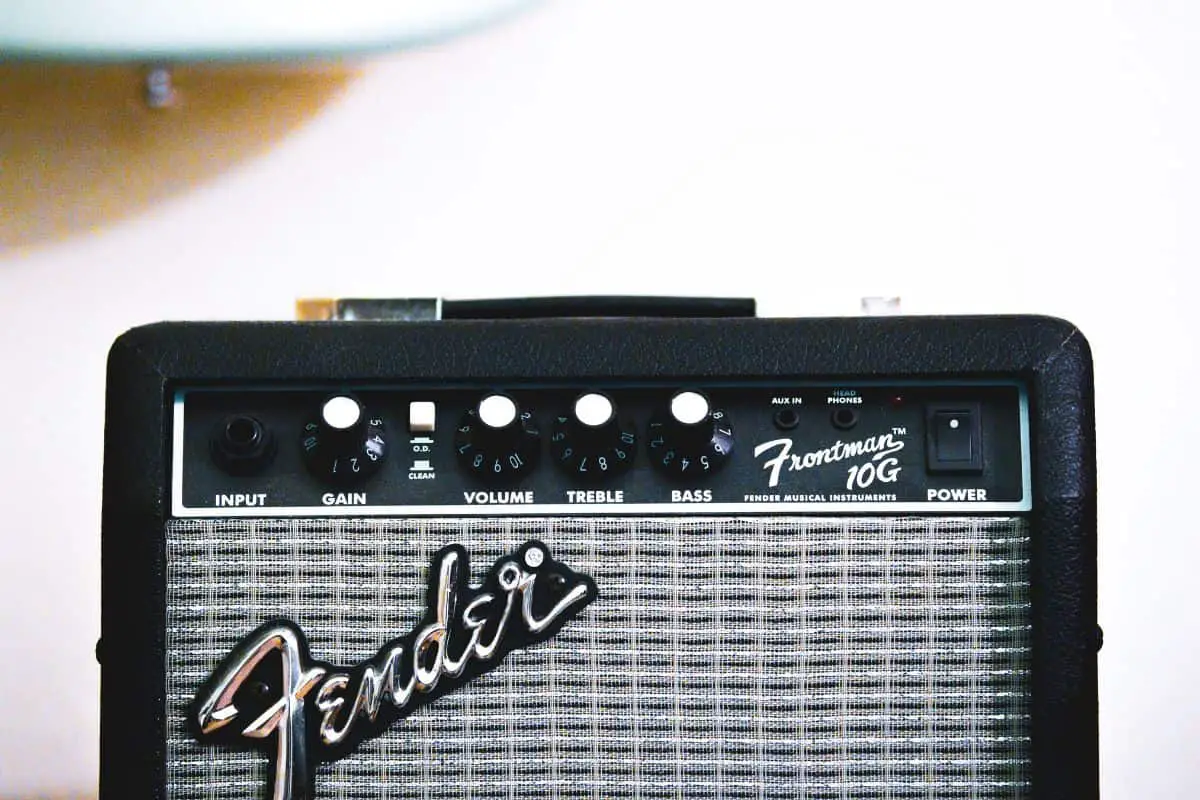Have you run your guitar amp to the ground, and now you need to clean it, but you don’t know how to? Then don’t worry because, by the time you’re done reading this article, you’ll know how to clean guitar amp thoroughly.
Cleaning guitar amp is an absolute necessity and must be done from time to time for proper maintenance. You’ll need to clean different parts of your amp inside-out. The outside part can be cleaned by dipping a clean cloth in water, while the other parts will have individual cleaning methods.
In this article, you’ll get to know all about cleaning your guitar amp, how to clean a guitar amp, the steps to maintaining it, how to clean a guitar amp inside-out, and more. Continue reading to get all the answers you’re looking for.
Keeping a guitar amp cleaned for the best results
Guitar amps are often seen as an afterthought when it comes to keeping the equipment clean. Aside from the intended use, they’re often seen as tables to which you set drinks and keep other stuff. Moreover, they also collect the same dust and detritus that get collected on guitars, leaving them looking uncared for.
Amps with synthetic coverings can be easily cleaned with a bit of soapy water and a soft-bristled brush. Place a drop of dish soap in a cup of water, dip a clean cloth, remove the excess water, and wipe your amp thoroughly from top to bottom. Use a soft-bristled toothbrush or scrub brush to focus on the hard, difficult corners. Moreover, please keep in mind the handles or hard-to-remove debris like spilled drinks. Using a dry cloth, ensure that there isn’t any moisture left on the guitar amp.
It’ll be best to wire the guitar amp off with a dry, clean cloth each time you’re playing. This helps keep the debris from building up and won’t need deeper cleaning often. The biggest reason to keep the amp clean is that it’ll improve its performance while extending its life.
How do guitar amps get so dirty?
24 hours a day, your amp will collect dust, just like the other pieces of furniture in your house. There’s always a constant haze of dust floating around in the air. It is composed of dander, pollen, smoke, dust, mites, bacteria, disintegrating carpet pads, plastics, and more. Each human in the house will shed about 30,000 to 40,000 skin cells every hour or so. Moreover, every year earth tends to add 40,000 tons of space dust. Three billion tires get manufactured on a yearly basis as the old tires wear into fine dust-like particles floating around the air.
Additionally, you’ll also add dander from your pets, pollen from the air, oils from cooking, and smoke/ash/residue from cigarettes to your amp. All this detritus amalgamates into dust, settling onto your guitar amp, which makes it look old and uncared for. The dust gets into the potentiometers and affects the performance of the amp.
Guitar amps are normally covered with vinyl or with Tolex or Leatherette. Sometimes, you’ll find them covered with tweed or real leather. The vinyl covers are textured, which means that a soft-bristled toothbrush or scrub brush is needed to clean into the nooks and crannies of the amp.
How to clean guitar amp with a vinyl/leatherette/tolex cover?
What do you need?
- A soft-bristled toothbrush or scrub bush
- Two dry, clean cloths
- Liquid dish soap
- Warm water
Method to clean a filthy guitar amp
- Unplug the guitar amp from the power source.
- Unplug the cords and cables.
- If you aren’t familiar with your guitar amp’s settings, it’ll be a smart idea to write them down. Write where each of the knobs is set before you start cleaning the amp. This way, you’ll be able to return them to the same settings once you’re finished with the cleaning.
- Remove the speaker grills.
- Remove each knob and clean under them. The dirt left under these knobs can work itself into the pots.
- Mix a couple of drops of liquid dish soap into a cup of warm water.
- Wet a clean cloth in the water-dish soap mix and wring as much water as possible from the cloth.
- Wipe the exterior of the guitar amp apart from the fabric screen.
- Carefully, use a soft-bristled toothbrush or scrub brush for cleaning hard-to-clean areas like the corners or around the handles.
- Use a second clean, dry cloth for drying off any spots that remain damp or wet.
- If you had to remove the knobs and clean the speaker grill, reinstall them.
- Done, you’ve cleaned your guitar amp.
A thorough, step-by-step guide on how to clean a guitar amp inside out
Whether you’re taking the amp out for gigs or to play at home, cleaning the amp will be essential. You’ll need to give it a thorough clean every now and then. Dust and grime could build up fairly quickly, and this wouldn’t just be on the outside. If dust or dirt gets inside the electronics or pots, it can severely affect your output. It might even result in humming or other unwanted noise. It’ll be best to get into the habit of maintaining and cleaning the amp once every few months.
You’ll need to keep your amp clean by wiping the vinyl exterior with a soapy cloth regularly. Clean out the pots, switches, input jacks, and tube pins with a deoxidizing contact cleaner and a cotton swab. You can make the grill cloth look new by using a carpet cleaner foam or a vacuum cleaner.

Your guitar amp is a crucial part of your guitar rig as a guitarist. It plays a key role in sculpting your sound and will be as beloved to you like the guitar itself. You’ll be able to enjoy a long, happy relationship with your amp if you keep the amp squeaky clean. Each section of the amp will need a slightly different approach when you’re cleaning. This step-by-step guide will help you clean each part of the amp in the best manner possible. When carrying out the maintenance on the amp, it’ll be important to do so safely. That is why you’ll need to ensure that the amp is unplugged and the power switch is off before cleaning.
Clean the cabinet exterior
- Vinyl Covering – Most amps come with a vinyl finish on the cabinet exterior, often Tolex. It’ll be best not to clean this surface with solvent-based cleaning products. Such products could easily leave marks. You can wipe down the dust with a damp, soapy cloth every now and then. You can use a decent liquid cleaner, as it’ll leave grease without leaving any marks on the vinyl covering. Moreover, ensure that you have a dry cloth with you to dry the vinyl surface after the cleaning.
- Fabric covering – Some older or custom amps come with a fabric or tweed covering instead of Tolex vinyl, notable classic Fender amps. The materials used are generally absorbent, and trying to remove the stains can make things worse. Therefore, it is recommended that you shouldn’t try to clean the fabric yourself. If it gets heavily stained, you can consider having the amp re-covered.
However, if it’s only the dust that you want to remove, give your fabric a cleaning with a vacuum cleaner. Use the brush attachment when you’re vacuuming, but remember to be gentle on the fabric, are you’re removing the dust. You can even give the faceplate a light vacuum with a bristled nozzle to remove the dust around the knobs.
Clean inside the cabinet
The back of the cabinet will differ from one guitar amp to the other. Some might be completely open, while others can be partially or fully closed. If there’s backing to your amp, you can remove it by unscrewing it. When working at the back of an open cabinet, you should be careful that you don’t damage any electrical elements.
It is recommended that you should purchase a compressed air duster. This way, you’ll be able to clear out the dust and cobwebs at the back of your speaker. Then, using a vacuum and brush attachment, you can vacuum the speaker and base of the cabinet. This will help you remove any dust that might have built up in the cabinet interior.
Maintain the preamp
Working with the preamp will be slightly more finicky, but it’ll do wonders for the longevity of your guitar amp. You’ll need to be careful when working with the electronic components of the amp. Be careful that you don’t touch any of the elements on the electrical board, like the capacitors. These elements can store a huge amount of voltage, enough to harm you even if the amp has been unplugged. For cleaning the crucial components of the preamp, you’ll have to get your hands on a decent electronic contact cleaner.
Remove the preamp
First, you’ll have to remove the preamp from the cabinet for accessing the elements that require cleaning. As mentioned, you should try not to touch electrical components as they’re very highly dangerous. For people who don’t know, the preamp is the console behind the amp’s faceplate. You’ll have to remove the preamp via the open back of the cabinet. However, before releasing it, ensure that you’re unclipping the wires attached to the speaker and reverb.
You should take note of which color wire you’re connecting to which connector on the speaker. Remember to ensure that you’re putting it back the same way around once you’re done. Capture a quick photo with your phone to be safe in case you forget how the wires were originally connected.

It isn’t necessary that all amps have to be identical. However, you’ll generally find star-shaped screws at the top of the guitar amp holding its preamp in place. Then, loosen the screws for removing the console and ensuring that you don’t drop the preamp. Once removed, you’ll be able to move to clean the different components of the preamp that require maintenance and cleaning.
Clean the pots
If you’re hearing any scratching sounds when turning the knobs, cleaning the pots will resolve this issue. Look for the pots that are circular silver resistors at the back of each knob. You must try at least a small opening in each, usually at the bottom. There might even be other openings at the top and side of the pot. Using a quality contact cleaner and nozzle, spray some cleaner into each hole of the pot.
When spraying each pot, turn the knob back and forth at the same time. If you’re having push-pull knobs, pull them and push them a few times as well. It’ll help spread the contact cleaner through the mechanism as much as you possibly can.
Clean the input jack
You can use a decent contact cleaner to clean out the input jack opening. The least invasive way of doing that would be to use cotton swabs. Spray the cleaner onto the cotton head of the swab, and then rub the swab around the shaft of the input jack opening. Make sure that you’re spreading the cleaner as much as you possibly can on the inside of the shaft.
You should then rub the cleaner onto the contact points inside the input jack opening. These contact points tend to oxidize effortlessly. If you don’t have swabs available, you can spray the jack itself with the contact cleaner. Then, put the jack into the input slot, turn it around slightly, and remove it.
Repeat this entire process a couple of times to spread the contact cleaner as much as you can. It isn’t as gentle as the swab on the shaft of the input jack, but it’ll still do the trick.
Clean the tubes
If you’re having a tube or hybrid amp, you can clean the tube tins and sockets with the contact cleaner. Pop-out the tubes one at a time and spray the pins with the deoxidizing contact cleaner directly. Ensure that you’re doing it over a paper towel or newspaper for protecting the surface of the workbench.
After you spray, you should place the tube back into the slot and give it a bit of wiggle. Then, remove the tube and insert it again. Do it a couple of times to spread the cleaner along the pins and sockets as much as you can.
Clean the on/off switch
The same will apply to the on/off switch. You should squirt a bit of contact cleaner into openings at the back of the switch mechanism for cleaning it. Flick the switch up and down a couple of times for spreading the contact cleaner. This will help prevent the switch from sticking.
Once you have cleaned the pots, tubes, input jack, and switch, re-affix the preamp on the inside of the cabinet. Secure the star-shaped screws at the top of the amp for holding the preamp in place. Once in, you should reattach the reverb and speaker wires as you’ve found them.
Clean the grills
- Metal grill – If your guitar amp features a perforated or expanded metal grill, it’ll likely be finished with a matt or gloss paint. Technically, the metal shouldn’t be exposed. In that case, wiping the grill down with a dusting cloth will keep the dust at bay.
A soapy cloth can be used for removing any marks or grime. However, it is suggested that you should remove the grill to not get moisture on your speaker. When cleaning the grill with water, finish by wiping the area with a dry cloth for avoiding marks.
- Cloth grill – Most grills come with a cloth covering, which can be cleaned by yourself. You’ll need to be gentle when working with the fabric, as it’ll tend to damage easily. If you’re only removing dust, vacuum the cloth grill using a brush attachment. Brush the surface lightly as you’re cleaning to prevent damaging the cloth. You shouldn’t push against the fabric, as it can stretch under pressure.
If the grill cloth is stained or grimy, you should use a foam-based cleaner. Using a foam carpet cleaner, you won’t need to use water and risk damaging the electrical components of your amp. If possible, remove the grill cloth before cleaning. Some grills could be popped in and out effortlessly, whereas others are stapled in place. If you take the grill out, you might need to staple it back when it’s done.
When removing the grill, you should be careful that you don’t damage the vinyl on the cabinet or cloth. If it isn’t possible to remove the grill, it’ll be best to clean it after the speaker standing upright. It’ll reduce the risk of moisture dripping onto the speaker behind the grill.
For cleaning, make use of a damp cloth and then spray it with a foam carpet cleaner. Run the surface of the grill cloth and spread the foam as much as possible. In case the grill is dirty, use a soft-bristled brush instead of a damp cloth. However, you need to be as gentle as possible when cleaning against the grill cloth. You would not want it to stretch or fray.
You should leave it to dry according to the instructions on the carpet cleaner. Then, vacuum the grill cloth using the brush attachment on the vacuum hose. Make sure that you are gentle as you’re vacuuming the residue left by the carpet cleaner. Use a dry cloth for wiping any excess residue off the grill cloth. After that, leave the grill cloth out for drying in the sun. When completely dried, pop the grill back in place and admire your work. Your grill will look and work great after a thorough cleaning.
Key tips to help you minimize dust build-up on the amp
Now that you’ve given your guitar amp a decent scrubbing, you’ll want to keep it looking good for a long time. Taking care when storing your amp can go a long way in keeping the amp in pristine condition. To keep the dust and mold at bay and prevent damage, keep the amp away from direct sunlight. It’ll be optimal to store it in a temperate, dry place when it isn’t being used. Your best defense against dust would be to purchase a cover or case for your guitar amp. There are many high-quality amp covers in the market, which will help you avoid having to clean the amp regularly.
Conclusion
Thank you for reading. Hopefully, now you know a lot more about cleaning your guitar amp, how to clean guitar amp, the steps to maintain it, how to clean a guitar amp inside-out, and more. Cleaning your guitar amp is an absolute necessity because dust builds up over time and affects the performance and sound quality. There are many components of a guitar amp and each one will need to be cleaned with its appropriate cleaning method.
Image Credit:
Images: Clean My Instrument, Music Strive



